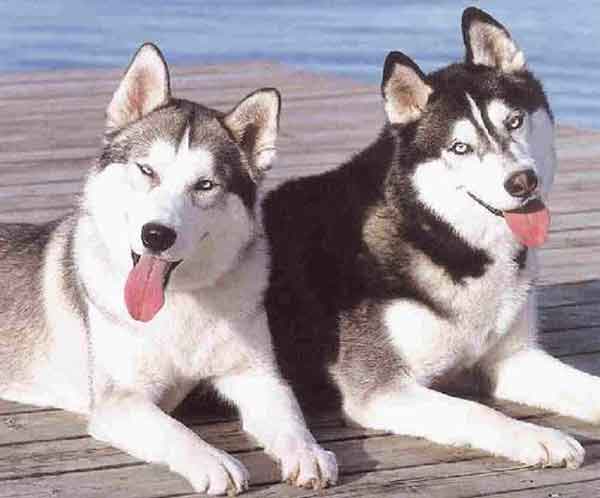當(dāng)前位置: Language Tips> 雙語(yǔ)新聞
11,000-Year-Old Living Dog Cancer Reveals Its Origin, Evolution
分享到

|
Scientists have sequenced the genome of the world's oldest continuously surviving cancer, a transmissible genital cancer that affects dogs. This cancer, which causes grotesque genital tumors in dogs around the world, first arose in a single dog that lived about 11,000 years ago. The cancer survived after the death of this dog by the transfer of its cancer cells to other dogs during mating. The genome of this 11,000-year-old cancer carries about two million mutations -- many more mutations than are found in most human cancers, the majority of which have between 1,000 and 5,000 mutations. The team used one type of mutation, known to accumulate steadily over time as a "molecular clock," to estimate that the cancer first arose 11,000 years ago. "The genome of this remarkable long-lived cancer has demonstrated that, given the right conditions, cancers can continue to survive for more than 10,000 years despite the accumulation of millions of mutations," says Dr Elizabeth Murchison, first author from the Wellcome Trust Sanger Institute and the University of Cambridge. The genome of the transmissible dog cancer still harbors the genetic variants of the individual dog that first gave rise to the cancer 11,000 years ago. Analysis of these genetic variants revealed that this dog may have resembled an Alaskan Malamute or Husky. It probably had a short, straight coat that was colored either grey/brown or black. Its genetic sequence could not determine if this dog was a male or a female, but did indicate that it was a relatively inbred individual. "We do not know why this particular individual gave rise to a transmissible cancer," says Dr Murchison, "But it is fascinating to look back in time and reconstruct the identity of this ancient dog whose genome is still alive today in the cells of the cancer that it spawned." Transmissible dog cancer is a common disease found in dogs around the world today. The genome sequence has helped scientists to further understand how this disease has spread. "The patterns of genetic variants in tumors from different continents suggested that the cancer existed in one isolated population of dogs for most of its history," says Dr Murchison. "It spread around the world within the last 500 years, possibly carried by dogs accompanying seafarers on their global explorations during the dawn of the age of exploration." Transmissible cancers are extremely rare in nature. Cancers, in humans and animals, arise when a single cell in the body acquires mutations that cause it to produce more copies of itself. Cancer cells often spread to different parts of the body in a process known as metastasis. However, it is very rare for cancer cells to leave the bodies of their original hosts and to spread to other individuals. Apart from the dog transmissible cancer, the only other known naturally occurring transmissible cancer is an aggressive transmissible facial cancer in Tasmanian devils that is spread by biting. "The genome of the transmissible dog cancer will help us to understand the processes that allow cancers to become transmissible," says Professor Sir Mike Stratton, senior author and Director of the Sanger Institute. "Although transmissible cancers are very rare, we should be prepared in case such a disease emerged in humans or other animals. Furthermore, studying the evolution of this ancient cancer can help us to understand factors driving cancer evolution more generally."
|
一般來說,癌癥在宿主體內(nèi)產(chǎn)生后,會(huì)隨著宿主的死亡而灰飛煙滅。不過,據(jù)《科學(xué)》1月23日?qǐng)?bào)道,有一脈“犬傳染性性病腫瘤”(CTVT)已經(jīng)存在了1.1萬(wàn)年,可能是有史以來最古老的癌癥。該腫瘤的第一任宿主在品種上接近哈士奇,其基因至今仍保留在腫瘤細(xì)胞中。 這一脈CTVT自1.1萬(wàn)年前首次出現(xiàn)以后,非但沒有消亡,反而通過交配在犬類中廣泛傳播。這項(xiàng)研究已經(jīng)在學(xué)術(shù)雜志《科學(xué)》上面發(fā)表。科研人員已經(jīng)完成了CTVT的基因排序工作,發(fā)現(xiàn)它已經(jīng)有了大約200萬(wàn)個(gè)變種。在人類中,癌癥的變種一般在1000至5000個(gè)之間。研究團(tuán)隊(duì)分析了其中一個(gè)變種,認(rèn)定CTVT最早出現(xiàn)在1.1萬(wàn)年之前。 論文第一作者、來自劍橋大學(xué)的伊麗莎白?默奇森博士說:“這個(gè)癌癥如此長(zhǎng)壽,實(shí)在難得。它的基因說明,在適當(dāng)?shù)沫h(huán)境下,癌癥能夠存活1萬(wàn)年以上,并衍生出數(shù)百萬(wàn)個(gè)變種。” 這個(gè)癌癥基因至今仍保有1.1萬(wàn)年前其首任宿主的基因。分析表明,這位“始作俑者”在品種上和哈士奇非常相似,毛發(fā)短而直,可能以灰、褐、黑等顏色為主。默奇森說:“我們不知道為什么這一條狗會(huì)患上傳染性癌癥。” 談及CTVT的傳播史時(shí),默奇森說:“不同大陸上腫瘤變種的范式表明,腫瘤長(zhǎng)期局限在一個(gè)孤立的犬類種群里,在過去500年內(nèi)才在全世界傳播開來。這些犬類也許是在探險(xiǎn)時(shí)代的早期跟隨主人們周游世界的。” 自然環(huán)境下的傳染性癌癥非常罕見。癌癥能夠在宿主的不同器官中擴(kuò)散,但很難傳染給其他個(gè)體。作者之一麥克?斯特拉頓說:“這個(gè)傳染性犬類癌癥的基因會(huì)幫助我們研究癌癥傳染的過程。雖然傳染性癌癥非常罕見,但我們必須做好準(zhǔn)備,以防類似疾病在人類或者其他動(dòng)物中出現(xiàn)。另外,通過研究這個(gè)古老的癌癥,我們能夠更加廣泛地了解影響癌癥進(jìn)化的因素。 美國(guó)國(guó)家衛(wèi)生研究院的癌癥遺傳學(xué)家伊萊恩?奧斯特蘭德說:“這絕對(duì)令人興奮。成千上萬(wàn)年來,犬類一直傳播、照顧這一脈的癌癥細(xì)胞,現(xiàn)在我們有機(jī)會(huì)研究它了。” 相關(guān)閱讀 【我的中國(guó)夢(mèng)】懸壺濟(jì)世的馬里醫(yī)生迪亞拉 斯諾登將在2月競(jìng)選英國(guó)大學(xué)學(xué)生校長(zhǎng) (王琦琛 編輯:玉潔)
|
|
|
分享到
關(guān)注和訂閱


口語(yǔ)
關(guān)于我們 | 聯(lián)系方式 | 招聘信息
電話:8610-84883645
傳真:8610-84883500
Email: languagetips@chinadaily.com.cn